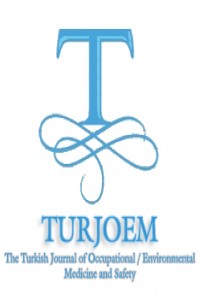Abstract
References
- Yildirim Beyazit University, Faculty of Medicine, Department of Pharmacology, Ankara, Turkey
- Selçuk University, Faculty of Medicine, Department of Pharmacology, Konya, Turkey
- Selçuk University, Faculty of Medicine, Department of Physical Medicine and Rehabilitation, Konya, Turkey
- Hacettepe University, Faculty of Medicine, Department of Pharmacology, Ankara, Turkey
CYP2C9 ACTIVITY IN ANKYLOSING SPONDYLITIS PATIENTS TREATED WITH TUMOR NECROSIS FACTOR-ALPHA (TNFα) BLOCKERS
Abstract
Ankylosing spondylitis (AS) is a chronic
inflammatory disease. AS is mainly characterized by inflammation, especially
increase of the proinflammatory cytokines such as, TNF-α, IL-6, IL-17 and
IL-23. Tumor necrosis factor-alpha (TNFα) blockers, for example, etanercept,
infliximab, golimumab and adalimumab are used for the treatment of AS. In a
previous study, we found that CYP2C9 enzyme activity was lower in AS patients
compared to the healthy volunteers. This work purposes to compare the phenotype
of CYP2C9 in Anti-TNF user and non-user AS patients.
A total of 32 patients with AS (11
Anti-TNF user, 21 non-users) were recruited in the study. A single 50 mg
losartan was given to the participants and 8-hr urine was collected overnight.
Then, the urinary concentrations of losartan and its metabolite, E3174, were
measured by high-pressure liquid chromatography. Urinary losartan/E3174
metabolic ratio was used as an index of CYP2C9 enzyme activity. Differences in
the metabolic ratio of losartan was compared with Mann–Whitney U test.
The mean values of losartan metabolic ratio
were 2.14 and 2.33 in Anti-TNF user and non-user AS patients (p=0.51, median
and 95% CI: 1.27 [0.92-3.35] and 1.84 [1.48-3.18], respectively).

CYP2C9 enzyme activity was similar in
Anti-TNF user and non-user, therefore anti-TNF drugs do not seem to interact
with CYP2C9 substrates.
References
- Yildirim Beyazit University, Faculty of Medicine, Department of Pharmacology, Ankara, Turkey
- Selçuk University, Faculty of Medicine, Department of Pharmacology, Konya, Turkey
- Selçuk University, Faculty of Medicine, Department of Physical Medicine and Rehabilitation, Konya, Turkey
- Hacettepe University, Faculty of Medicine, Department of Pharmacology, Ankara, Turkey
Details
| Journal Section | Articles |
|---|---|
| Authors | |
| Publication Date | February 16, 2017 |
| Published in Issue | Year 2017 Volume: Volume 2 Issue: İssue 1 (1) - 2.İnternational Congress Of Forensic Toxicology |


